Once you’ve decided to visit Italy, especially if it’s for the first time, it’s easy to catch yourself daydreaming daily about sparking blue seas, delicious wine, rolling hills, and ancient cities (I still do this on a near-constant basis), but successfully planning a trip to Italy requires some not-so-daydream-like steps as well!
After dozens of trips to Italy and hundreds (if not more than a thousand) of trips across the world, we’ve developed a consistent system for putting together the perfect trip to Italy.
From booking transportation to deciding exactly where to go, we’ve broken down your Italy trip planning into a manageable step-by-step process.
Use this Italy travel checklist to ensure that you jet off on your vacation without a single worry!

Your 11-Step Italy Travel Checklist
Step 1: Check visa requirements (things may be changing in 2025!).
While most readers of this blog post, such as Americans like us and other people from non-European, strong-passport countries like Canada and Australia, don’t need a traditional visa to visit Italy, a new travel authorization is slated to go into effect in 2025… or maybe 2026.
The much-talked-about ETIAS authorization is slated to begin in mid-2025, though it has been pushed back several times.
Italy is part of the Schengen Area, which refers to the 29 European countries that share open borders with each other.
Americans and many others can visit this group countries for up to 90 days out of any 180.
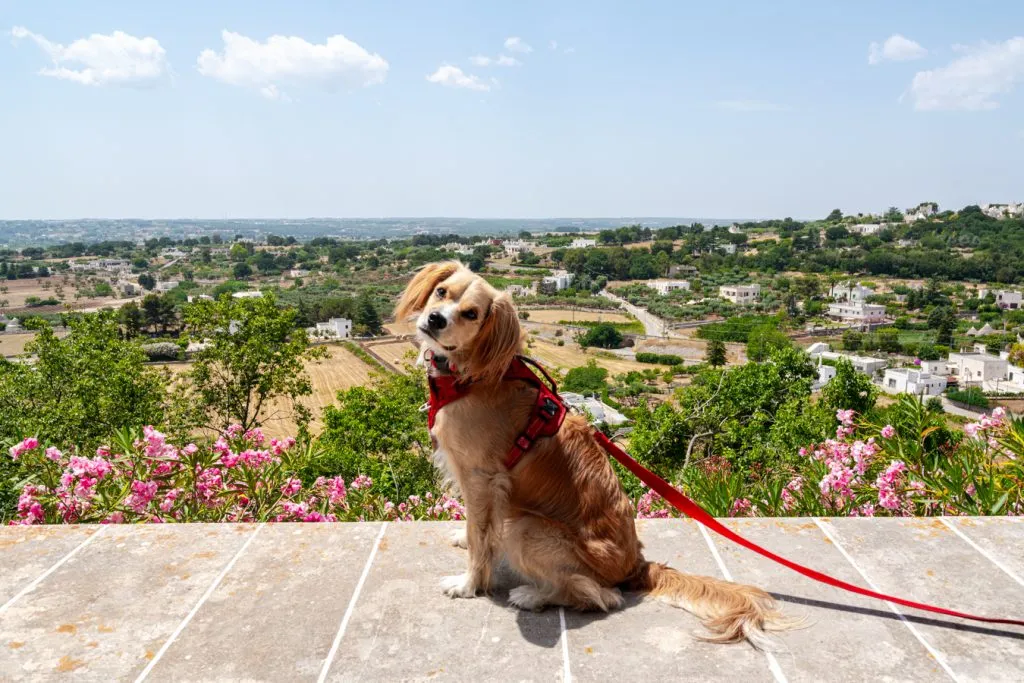
Up until now, this hasn’t required any paperwork, but the ETIAS system will change that in a minor way.
The ETIAS authorization is essentially an e-visa procured by filling out paperwork online before traveling, which will cost a nominal 7 Euro.
While we can’t speak to the experience personally yet, of course, as the system isn’t live, by all accounts it is expected to be a fairly simple process that won’t add more than a few minutes of work to most travelers’ Italy trip planning process.
Our recommendation is to not stress about it, but definitely keep an eye on the official ETIAS website for any starting dates that might overlap with your vacation!
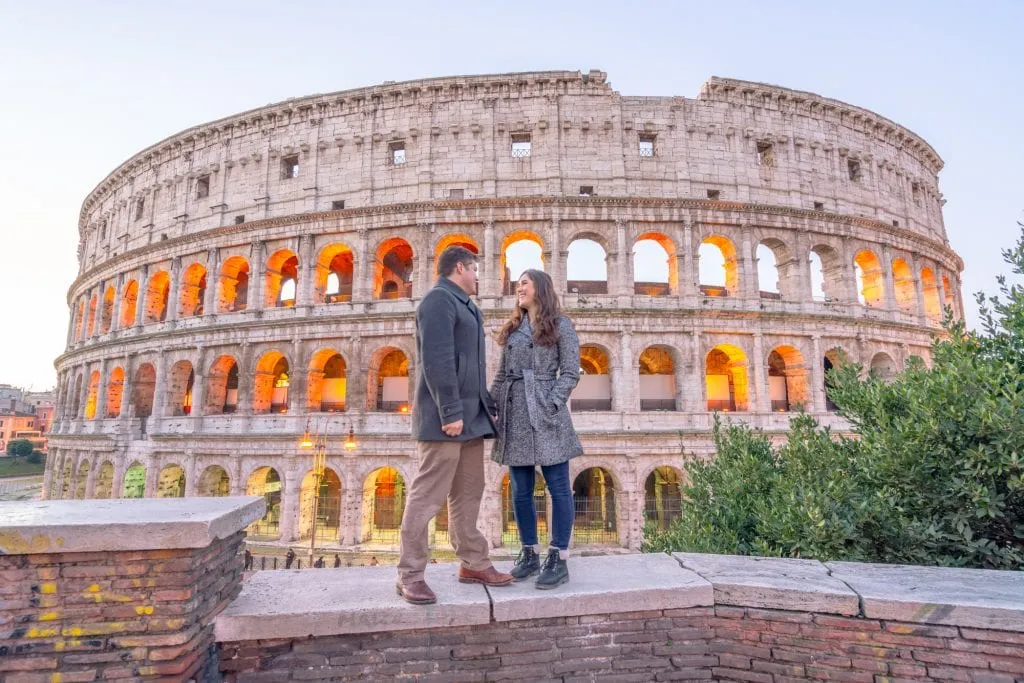
Step 2: Shop for flights to Italy (and be as flexible as possible).
At this point when planning a trip to Italy, it’s time to make it official and book your tickets to the country!
We recommend being as flexible as possible during this process, either with your travel dates, your destinations, or ideally, both.
Flight prices and routes can vary dramatically depending on where you’re coming from and where you’re going, which is one reason why we don’t recommend finalizing your Italy itinerary until you have your flights purchased (more on that below).
Ideally, you’ll want to start and end your vacation in a major airport hub.
This doesn’t necessarily need to be the same hub, though!
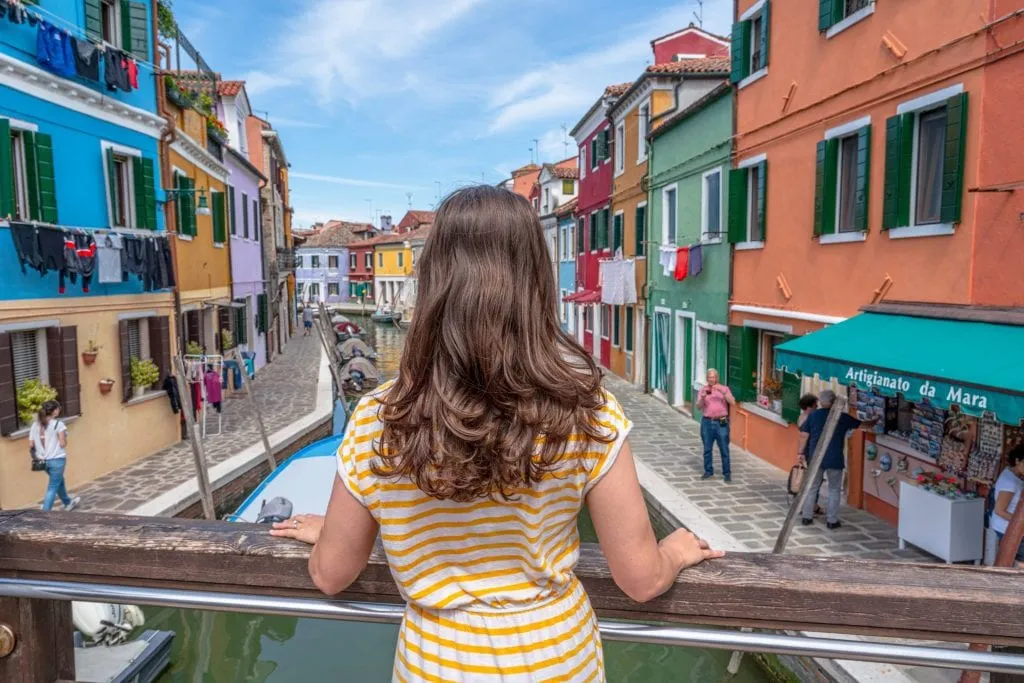
If you’re flying a long distance or are planning to visit multiple regions in Italy, we recommend being pretty flexible with what airport you fly into in order to get the best flight prices.
For intercontinental flights, you’ll want to check the price for flying in and out of Rome, Florence, Milan, Venice, and Naples.
For shorter flights within Europe, those flying on budget airlines should also check Bologna and Pisa, as well as Bari, Palermo, and Catania if you’re headed south.
Also, be open to the idea of flying into one city and out of another!
While this can sometimes be much pricier, other times it’s surprisingly affordable and allows you to spend less of your trip to Italy doubling back to a city you’ve already visited.
We recommend running the numbers both ways.
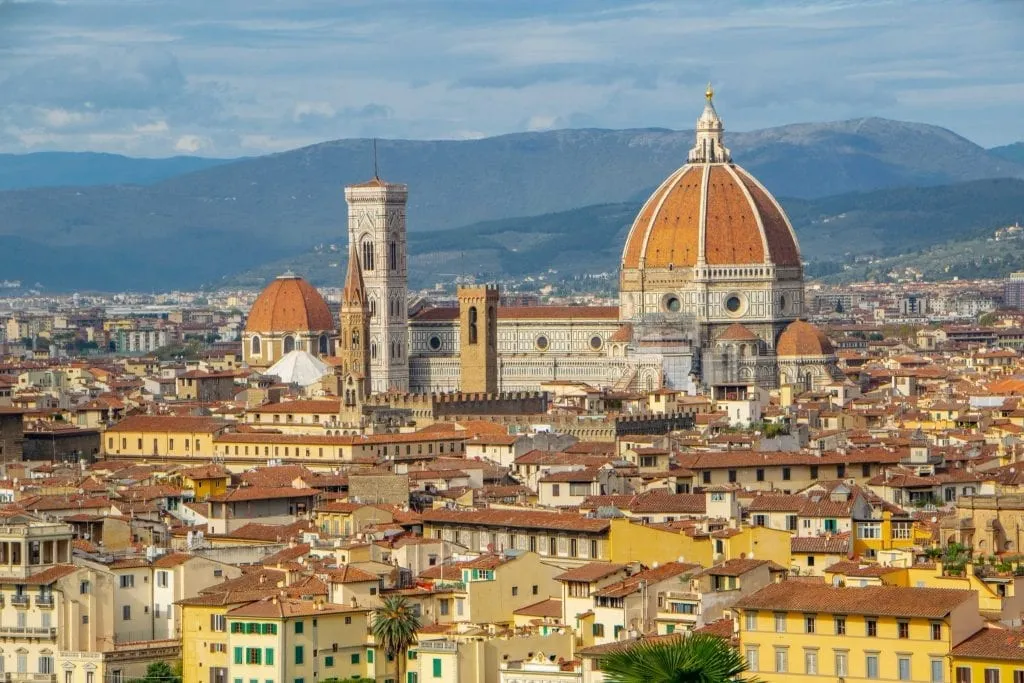
Step 3: Narrow down your Italy itinerary.
This might be both the most fun and most stressful part of planning a trip to Italy: finalizing where exactly you’re going to go!
If you’re planning your first trip to Italy and hoping to hit the classic highlights, we have a recommended 2 week Italy itinerary here on Our Escape Clause, as well as suggestions for spending a week in Italy and an extra-compressed recommendation for 5 days in Italy.
Ultimately, though, the sky’s the limit!
If you’re looking for the classic Italy experience, a combination of Rome, Florence, Venice, and Cinque Terre makes an amazing first trip.
If you’re more interested in mountain lakes than iconic coastal villages, you could swap Cinque Terre for Lake Como.
If you hope to head south from Rome, Naples, the Amalfi Coast, Pompeii, and Capri are all within close distance of each other and make a great addition to a trip or even a standalone vacation.
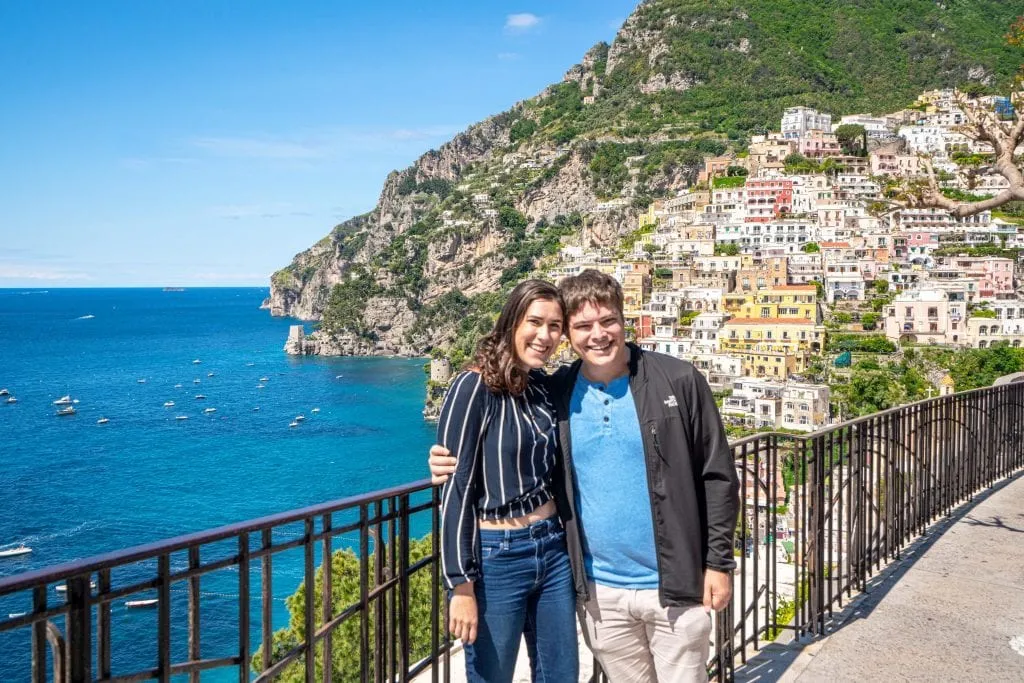
If you’re hoping for mountains, look at Trentino-Alto Adige–Bolzano and Cortina d’Ampezzo are often the launching pads for exploring the Dolomites.
Beach lovers, consider heading to Sicily, Sardinia, or Puglia (which is one of our favorite places in the country).
And, of course, foodies can’t go wrong anywhere in Italy–but the regions of Tuscany and Emilia-Romagna in central Italy are sure to captivate your tastebuds.
Looking for something a bit further off the beaten path for first-time visitors to Italy? The food in Piedmont is some of the best in the world.
Interested in roadtripping? Italy is home to some fantastic road trips, though not every area is suited for it.
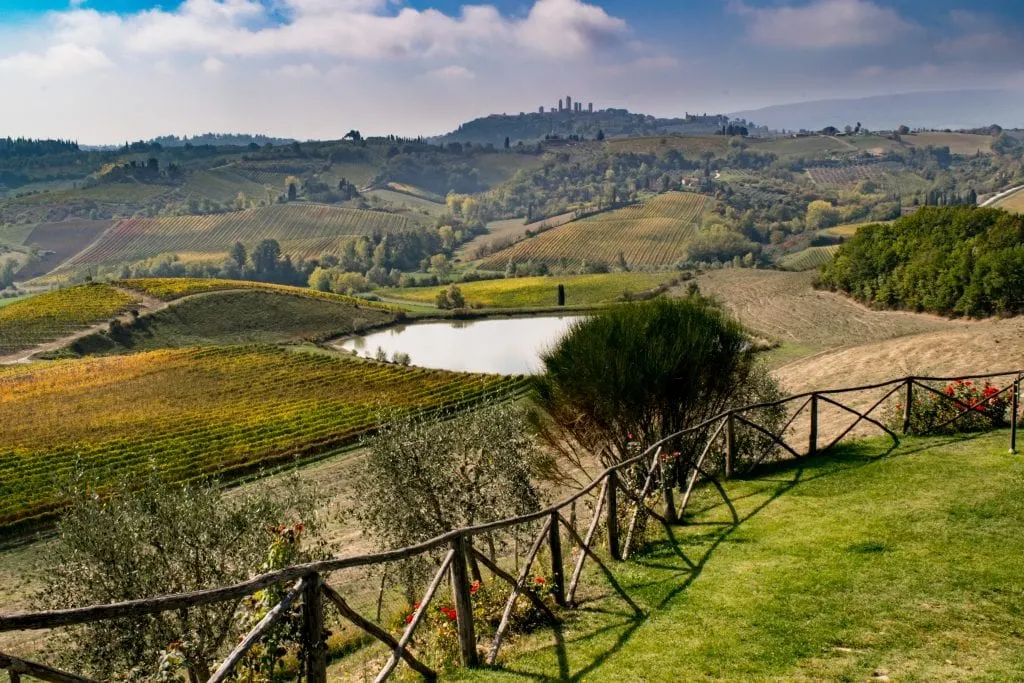
Step 4: Finalize your Italy travel budget.
Now that you know exactly when your trip to Italy is happening and where you are going, it’s time to finalize your Italy travel budget!
We recommend taking the total amount you hope to spend in Italy, subtracting any splurges or major expenses you know are coming (a pricey tour, some clothes shopping, etc), and then dividing the remaining amount by the number of days you’ll be traveling in Italy.
Presto–you have your daily Italy budget, aka the number you should try to stay under each day when you add up the amount you spend on food, activities, and intra-city transportation.
We detail this strategy more thoroughly in our travel budgeting guide, and we’ve been successfully using it to travel the world for more than 10 years now!
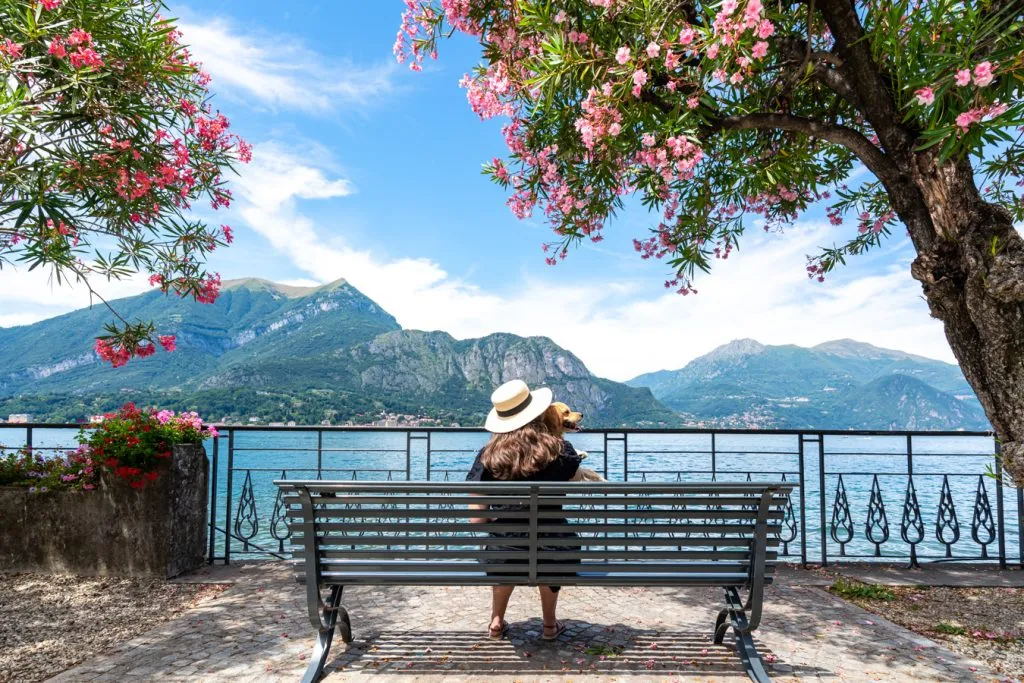
Step 5: Book some activities in advance.
Here’s the fun part of planning a trip to Italy: booking those iconic experiences you’ve always dreamed of!
While there are plenty of magnificent things to do in Italy that require little to no advance planning, many of Italy’s most iconic attractions are definitely better experienced by booking in advance, whether that’s by booking a tour or simply purchasing a timed entry ticket.
Many top attractions, like climbing the Leaning Tower of Pisa or heading to the top of the Duomo in Florence, defacto require reservations to visit.
We go into far more detail about this in our guides and itineraries for each specific location, but here’s a quick rundown of some of the major sights you’ll want to book ahead of time.
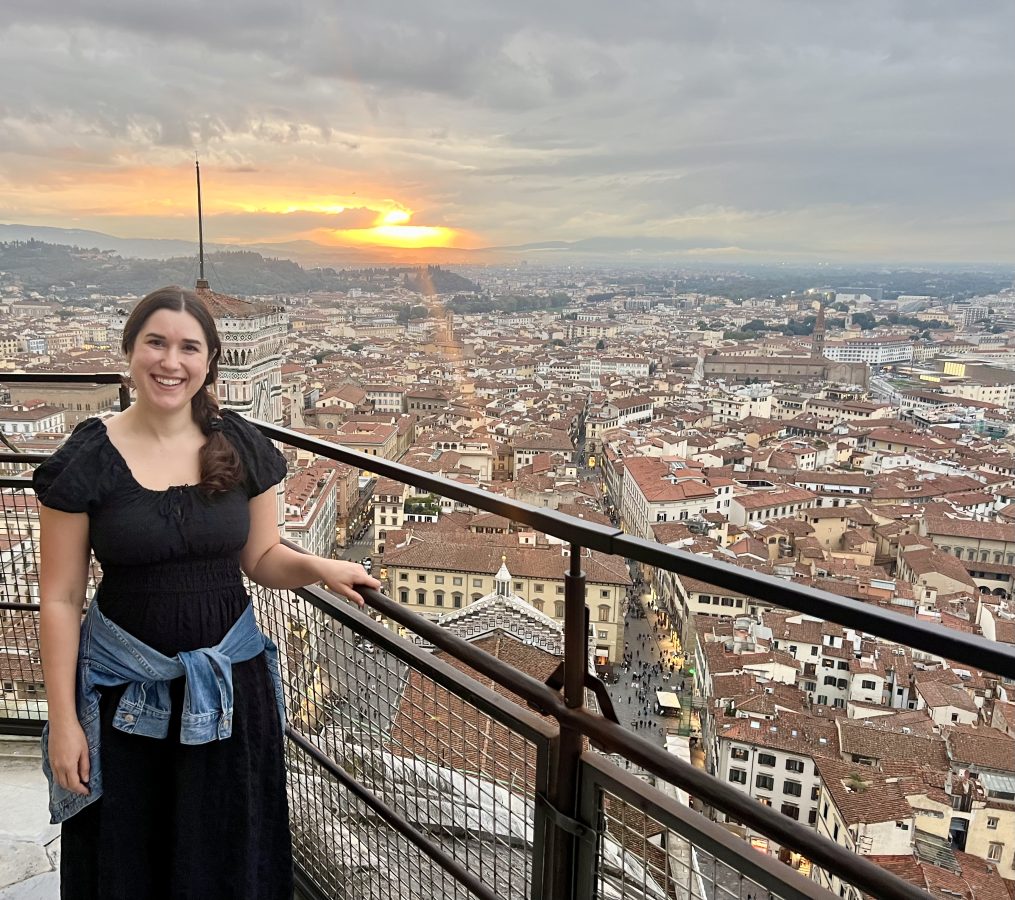
Rome
The Colosseum
The Vatican Museums
Florence + Tuscany
Uffizi Gallery
Galleria dell’Accademia (This is where you’ll find David!)
Duomo Climb
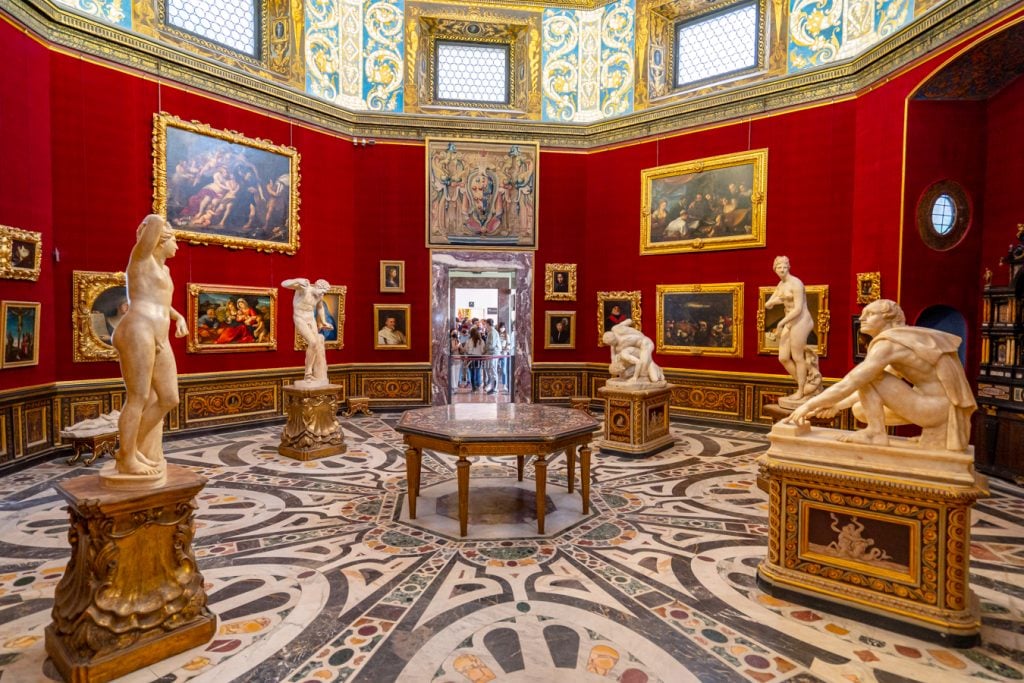
Pompeii
Pompeii Guided Tour
Venice
Doge’s Palace + Basilica
Shared Gondola Ride
(Want to take a private gondola ride instead? They’re amazing, but we don’t recommend booking them in advance.
This blog post covers why, plus everything else you need to know about gondola rides in Venice!)
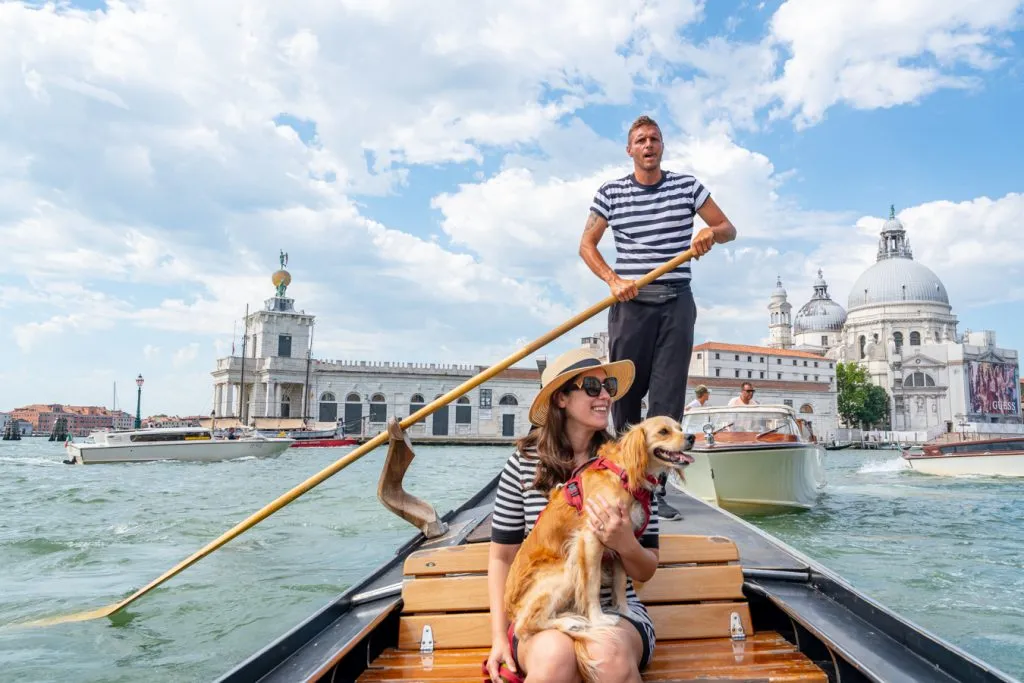
Step 6: Book accommodation.
Next step in planning a trip to Italy: deciding where to sleep!
We offer specific hotel suggestions in our itineraries for each location that we have written about, but here’s the bottom line: in Italy’s major cities like Rome and Venice, it’s fairly easy to find somewhere to stay, so don’t stress about booking months ahead of time unless you have a particular property in mind.
In smaller towns, though–think those along the Amalfi Coast or in Cinque Terre, for example–properties tend to book up a lot faster, and you’ll want to book as far in advance as possible.
We use Booking.com to book hotels and sometimes apartment stays in Italy, and if that doesn’t work out, check out Airbnb for longer apartment stays (we seem to use fewer and fewer Airbnbs each year, though, as apartment rentals become more common on Booking.com).
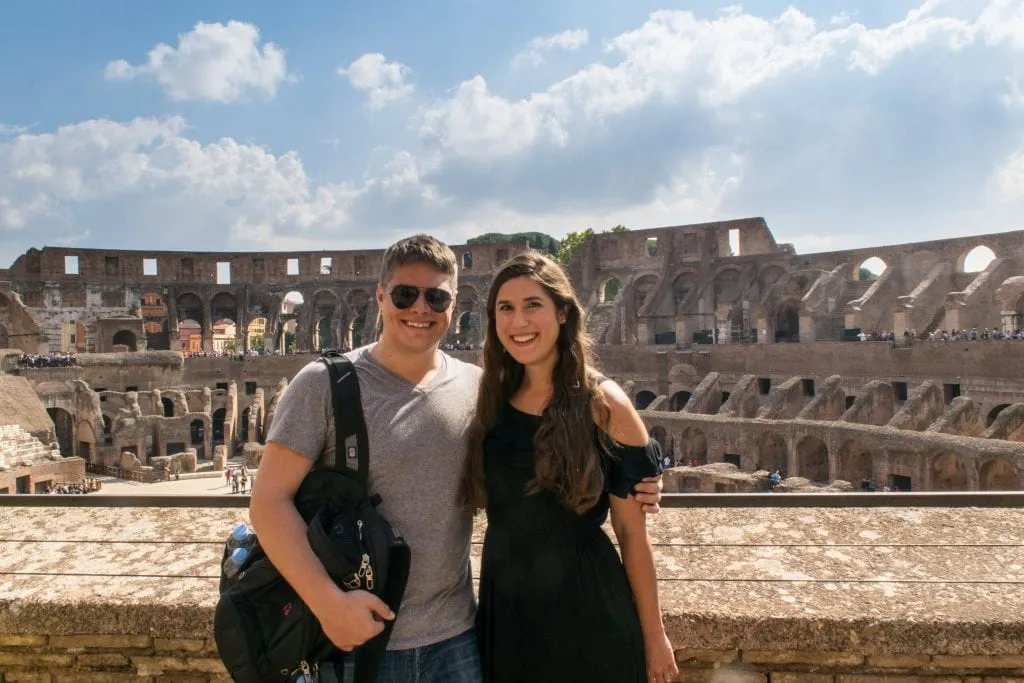
Step 7: Figure out your inter-city transportation.
Now that you know exactly where you want to go, figuring out how to get from destination to destination in Italy–and most importantly, how long it will take and how much it will cost–is the next step in planning an Italy trip.
When traveling between cities, high-speed trains are by far and away our favorite way to travel Italy, though they’re not always the most budget-friendly.
Buses, and even budget flights, can sometimes be cheaper, so be sure to check multiple methods of transportation if you’re traveling Italy on a budget!
If you’re planning to take any high-speed trains in Italy, keep in mind that the prices increase as your dates get closer, so book ahead as soon as you’re ready to commit!

The vast majority of trains in Italy are operated by either Trenitalia or Italo, with companies like Trenord in Lombardy taking a very small market share.
Omio is a ticket aggregate that we use across Europe for purchasing high-speed train tickets (they sell bus tickets and even some ferry tickets as well) and will allow you to compare the schedules and prices of multiple train companies at the same time.
For the slower regional trains and commuter trains, prices are standardized and you can simply purchase them in person on the day of travel (you can also purchase them online in advance if you prefer).

We recommend only renting a car if you’re specifically planning a road trip that includes stops in some of Italy’s beautiful rural areas and small towns.
Having a rental car in a city like Rome or Venice isn’t an asset, it’s an expensive liability!
Note that if you hope to rent a car in the country, you’ll need to obtain an international driving permit before arriving (and double-check that your insurance covers driving in Italy, or purchase a policy that does!).
If you do want to rent a car, check Discover Cars for prices and availability.
We personally have no brand loyalty at all when it comes to renting cars in Italy, and have rented from more agencies than we can remember, ranging from international to local, without issue.
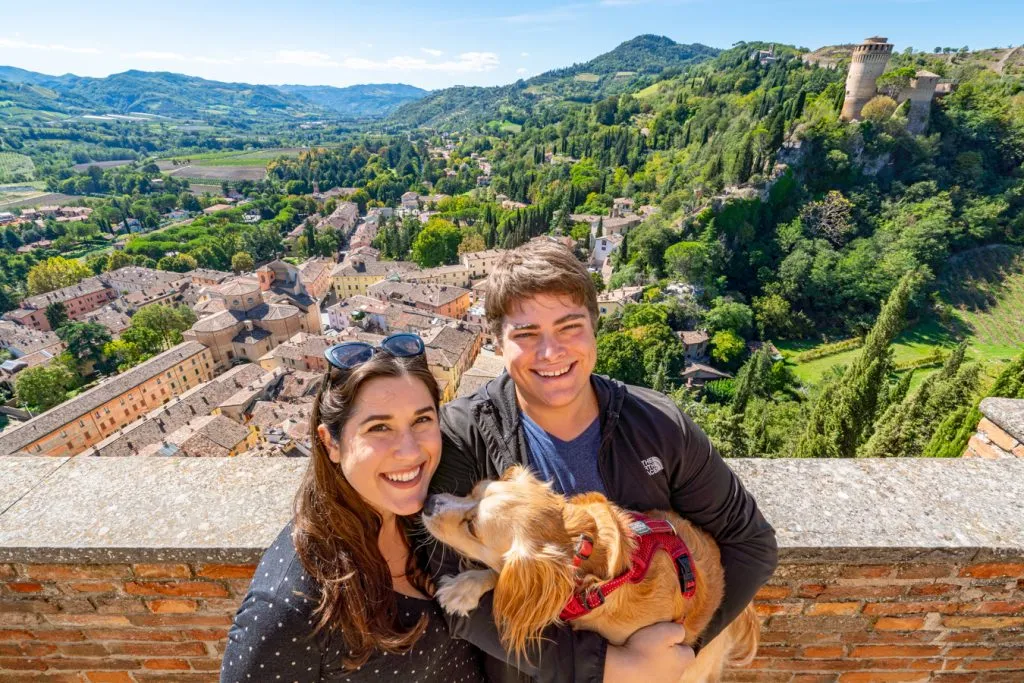
Step 8: Learn a little Italian.
If you’re staying firmly on the tourist trail on your trip to Italy, you won’t necessarily need to speak any Italian to travel there.
… But you will almost certainly encounter some monolingual Italians, and either way, it will definitely enhance your experience in the country to know a tiny bit of Italian.
We personally don’t choose to carry phrasebooks with us while traveling, but if you like to, Rick Steves’ Italian Phrase Book gets wonderful reviews.
Here are a few phrases to add to your vocabulary when planning a trip to Italy:

Basic Italian Phrases to Learn When Planning a Trip to Italy
Buongiorno. — Good morning.
Buona sera. — Good evening.
Ciao. — Hello/goodbye. (More casual than above.)
Per favore. — Please. (When requesting or accepting something.)
Grazie. — Thank you.
Prego. — You’re welcome, or please. (When offering something–as in, “Please, have a seat.”)
Non capisco. — I don’t understand.
Parla inglese? — Do you speak English?
Il conto. — The check. (In a restaurant.)
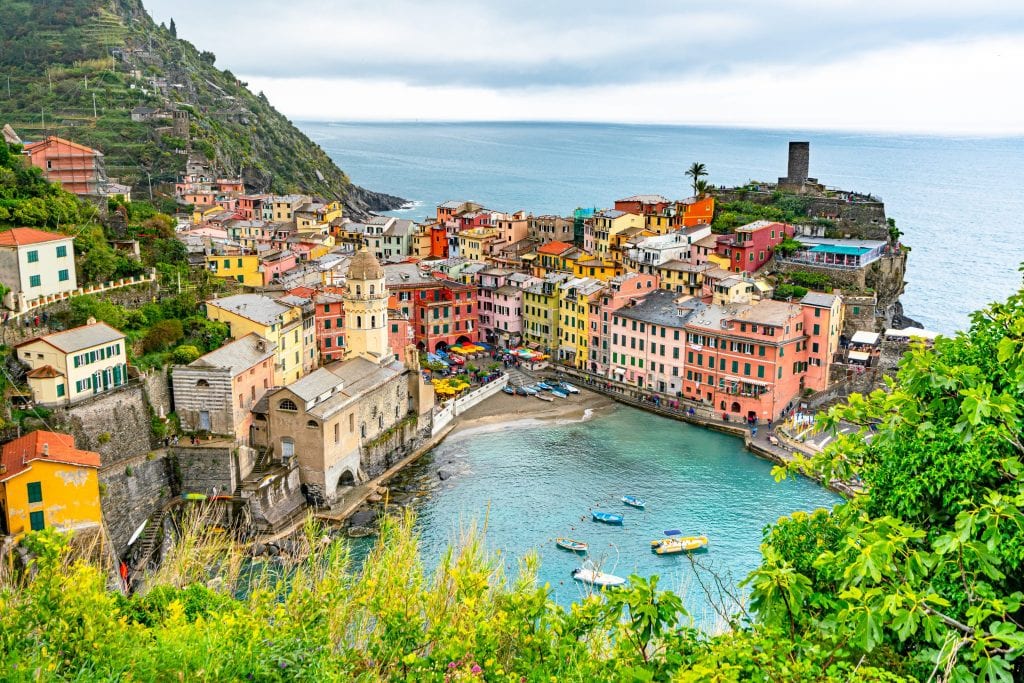
Step 9: Put your Italy packing list together.
Packing can often be one of the most unexpectedly stressful parts of getting ready for a trip abroad, and Italy is no exception!
You can check out our full suggested Italy packing list here, and our detailed suggestions on what to wear in Rome here (which work for quite a bit of Italy!).
Be sure not to stress too much about packing for Italy, though–just about anything you could possibly forget will be available there too!
Here are a few essentials to be sure to add to your Italy packing list:
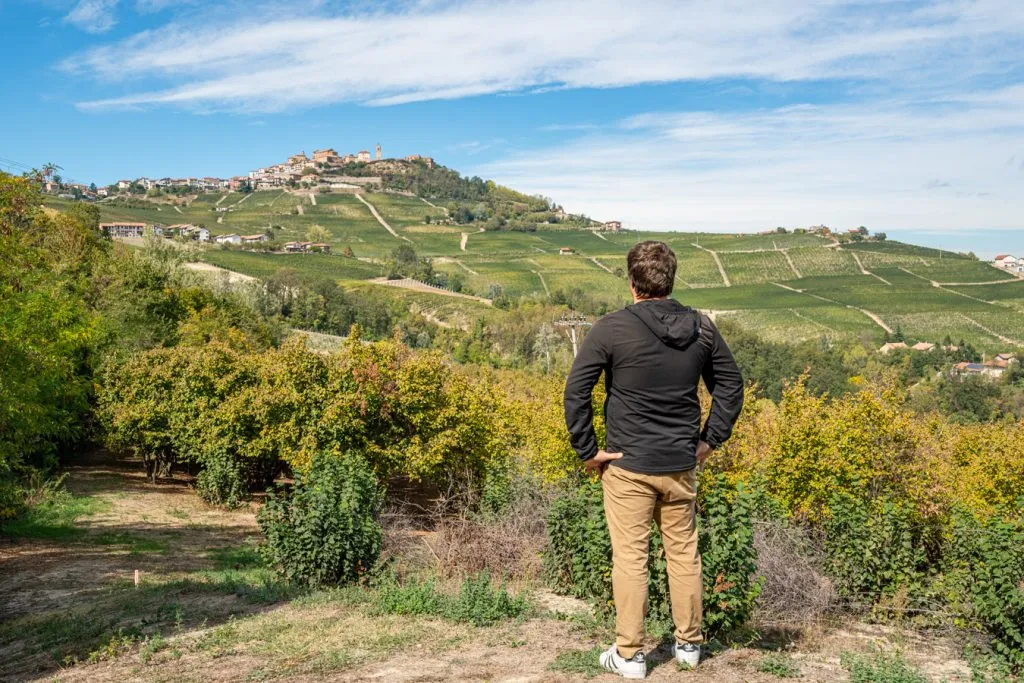
Travel Adapters for Italy — If you’re coming from outside of Europe, you’ll definitely need adapters for your electronics! Don’t forget to add buying these to your to-do list for planning your trip to Italy.
Apple Air Tags — Air Tags are a relatively new addition to our packing list, but we’ve absolutely loved having the extra security when checking out luggage!
They’ll be traveling with us from now on.
Pacsafe — We can’t recommend our Pacsafe
enough: this travel safe is affordable, sturdy, easy to pack, and will help keep your valuables safe in your hotel room (not that you should need to worry much about theft in Italy, but it’s better to be safe than sorry).
Comfortable Day Bag — We currently use Pacsafe’s sleek anti-theft backpack and love it, but if you don’t want to shell out the cash for this trip, that’s totally understandable.
Just aim for something comfortable to wear, not flashy, and medium-sized–we used a Northface Jester backpack for years and loved it as well.
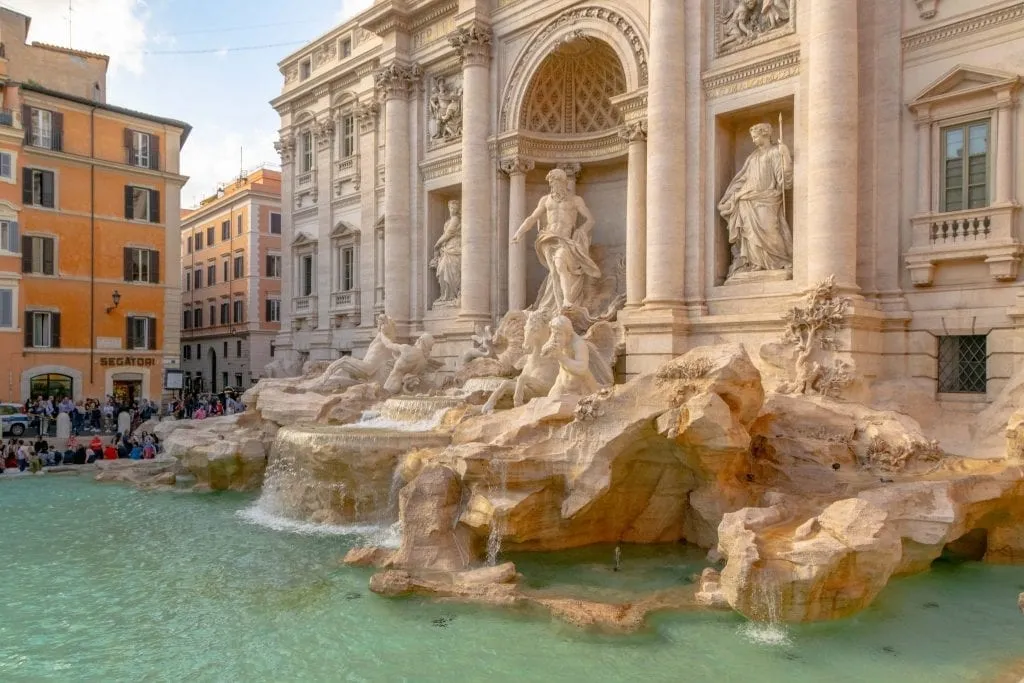
Umbrella — Option A: Plan on buying an umbrella when it starts pouring down rain. Option B: Plan ahead and buy a (probably much sturdier) umbrella before leaving.
Option C: Hope you get lucky with the weather (but fair warning, we’ve never been to Italy and avoided rain entirely!).
Reusable Water Bottle — You’re definitely going to want to carry water with you as you explore Italy (especially during the hot summer). Cut down on plastic waste and bring a reusable water bottle instead!
Purell Hand Sanitizer — We’ve never been sorry to have this floating around in our day bag.
Money Belt — This is up to you: we no longer use one, but if you’re more comfortable having your passports on your person in Italy, you can consider bringing one.
We used to use this one and had no complaints. These days, we prefer just to leave valuables in our Pacsafe during the day.
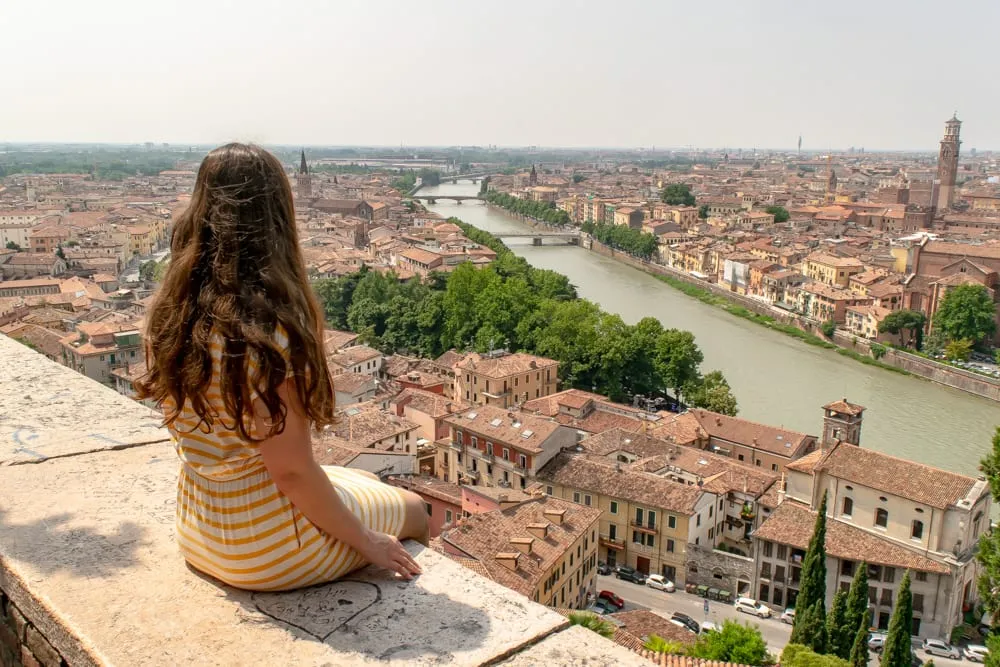
Step 10: Purchase travel insurance.
Don’t forget to shop for travel insurance before jetting off to Italy!
While Italy is a perfectly safe country to travel in, traveling in general opens you up to vulnerabilities that you simply don’t have at home.
If you miss a plane or train, have your luggage get lost, get pickpocketed, or worse, get injured, you’ll be glad that you have insurance.
Given how inexpensive travel insurance is when purchased in advance (especially as compared to the price of plane tickets to Italy!), it’s well worth the investment.
Check travel insurance policy inclusions and prices for your trip here.
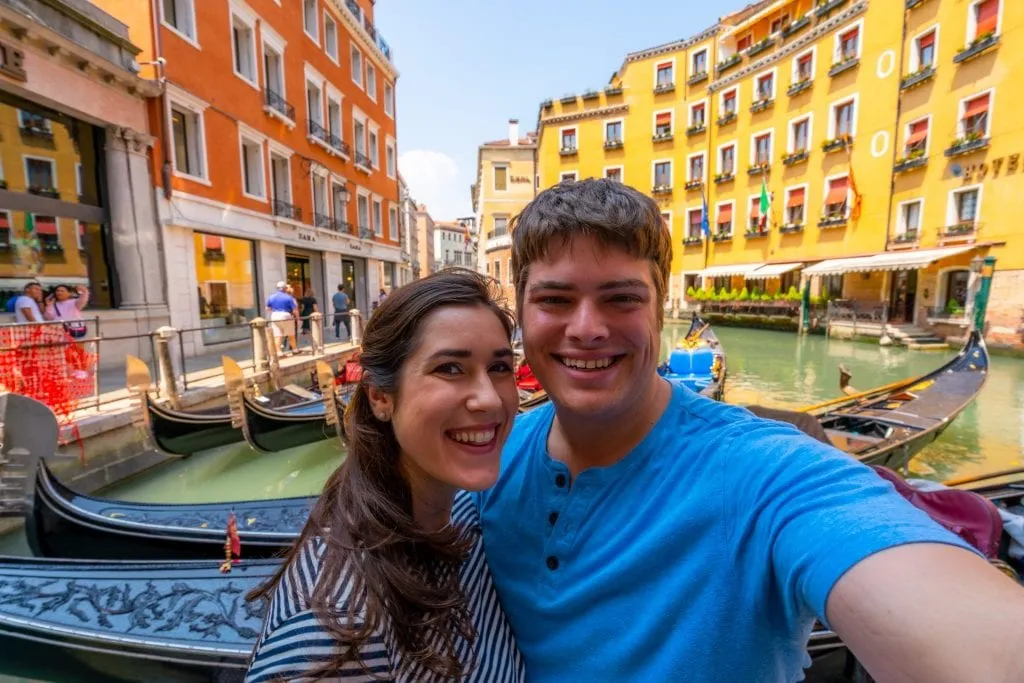
Step 11: Make your arrival plan.
The final step of planning a trip to Italy is as simple as it is important: make an arrival plan.
When you arrive in Italy, you’re undoubtedly going to be exhausted, overwhelmed, and probably a bit jetlagged, too!
No matter how many times we arrive in a new country, it never stops being a tiny bit stressful, simply because there are a lot of variables at play in the first few hours of arriving somewhere new.
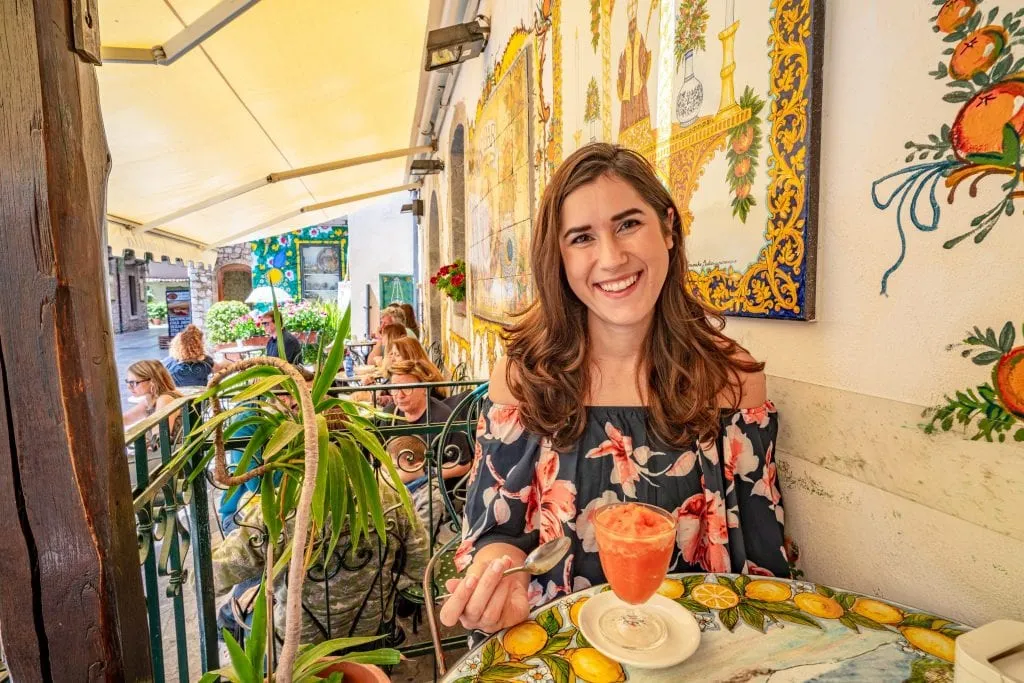
Make life easier on yourself by thinking ahead: when working on your trip to Italy plan, figure out your exact steps of what will happen after the plane lands.
That means exactly how far away your hotel is, how you’ll get there from the airport (train, bus, rental car, taxi?), and if you’ll be traveling by taxi, what a reasonable price is and/or if there’s a set fare from the airport to the city center (in Italy, there often is).
Though it’s not strictly necessary, if you’d like to make arriving in Italy extra easy for yourself, consider treating yourself to an airport transfer when you arrive!
Here are a few solid options:

Rome
Shuttle Bus from Fiumicino Airport to Roma Termini
(Bear in mind that while this is actually cheaper than taking the Leonardo Express train independently, it does also take longer to drive into Rome than it does to travel by train!)
Private Transfer from Fiumicino Airport to Rome
Florence
Private Transfer from Florence Airport to Florence
Venice
Shuttle Bus from Marco Polo Airport to Venice
Shared Water Taxi from Marco Polo Airport to Venice
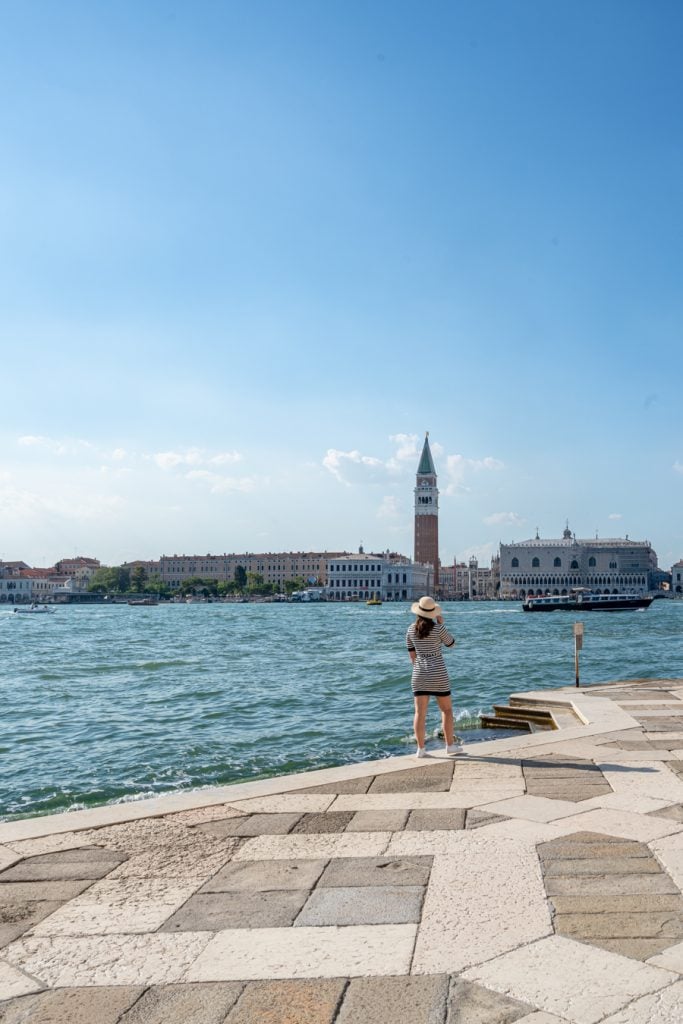
Keep Planning Your Trip to Italy
If you found this guide to how to plan a trip to Italy helpful, we’d love to continue to be part of your travel research here on Our Escape Clause!
After spending a cumulative total of more than a year each traveling Italy, it’s safe to say that we have far more Italy travel tips to share than we could fit here!
You can browse our nearly 150 Italy blog posts here, or check out these guides:
- How to Enjoy a Typical Breakfast in Italy (Bar, Hotel, or Home!)
- Florence or Rome: Which Classic Italian City is Right for You?
- Summer in Italy: How to Plan Your Sun-Soaked Dream Trip!
- Driving from Rome to Florence: Where to Stop + Travel Tips
- How to Eat Pizza in Italy: 13 Practical Tips (+ Toppings Guide!)
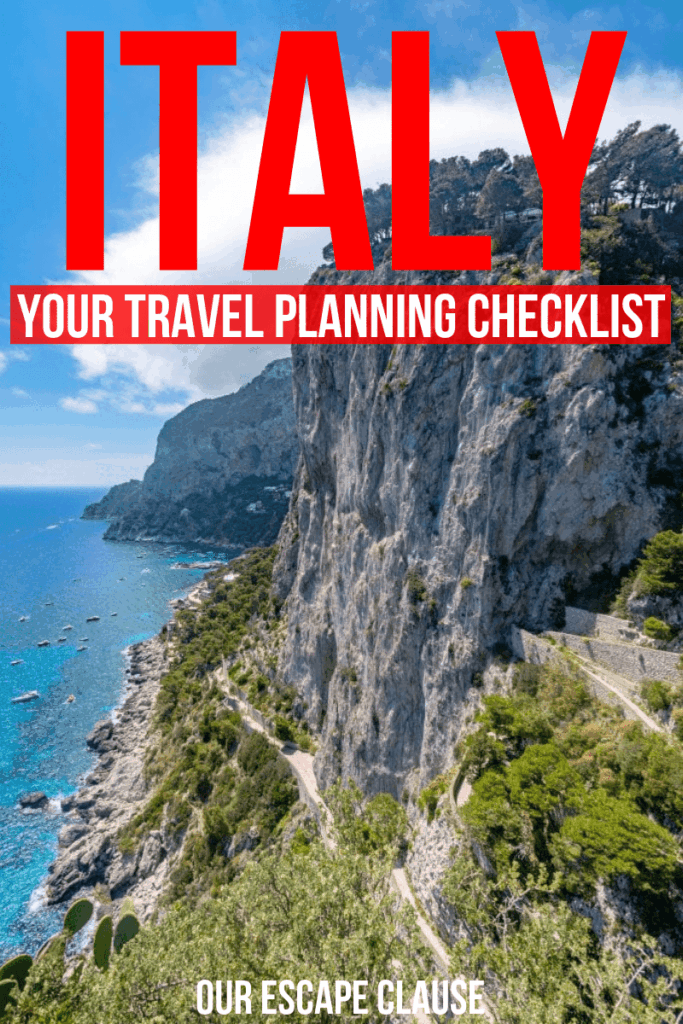
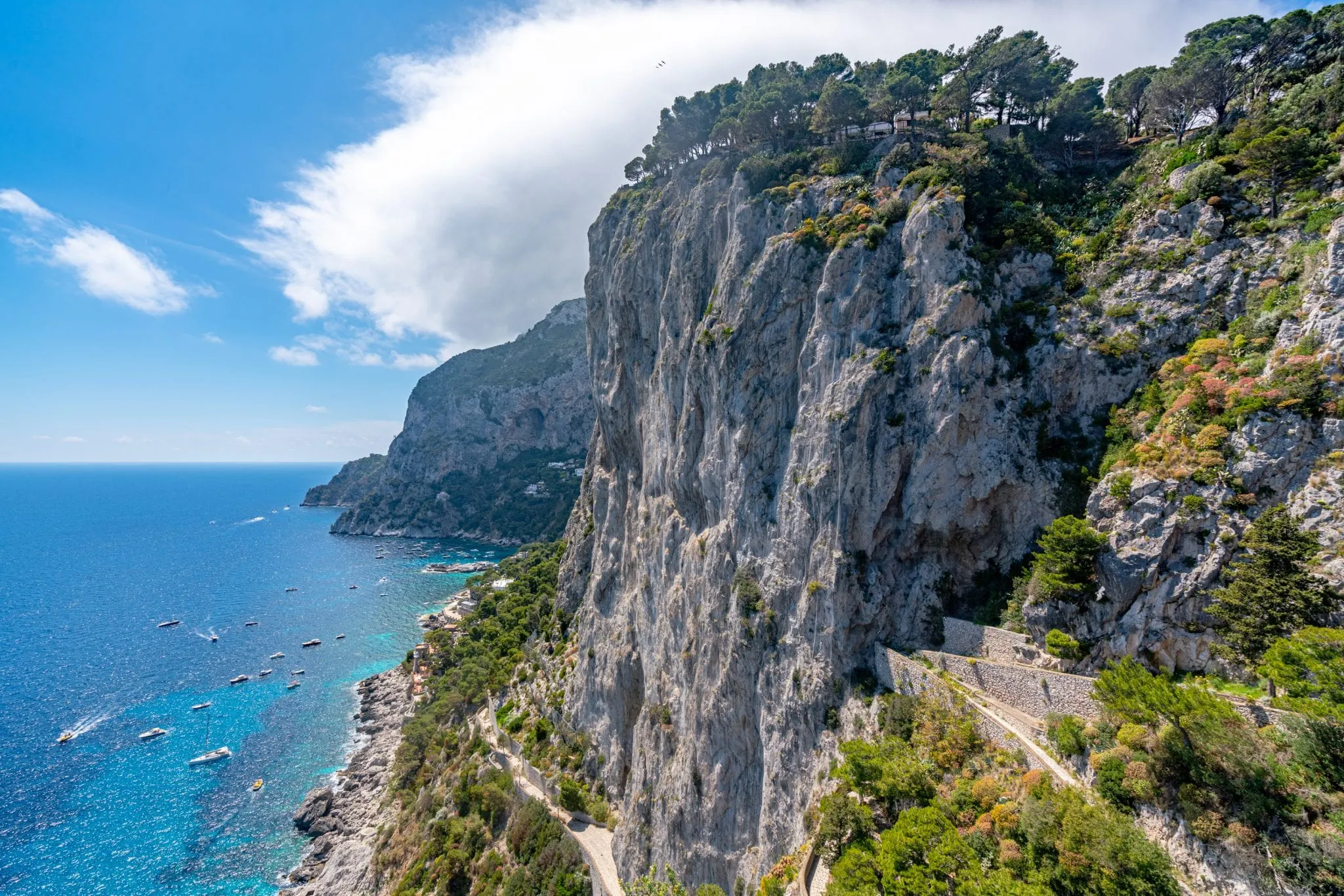
This super helpful. Thank you so much!
Thrilled to hear it, thanks Tomeekha!
I am so thankful I found you, Kate! I plan to use your valuable wisdom in planning an extension to a food & wine tour that I booked in 2021. This existing tour ends in Rome. I want to plan a 3-4 night extension along the Amalfi Coast. Congratulations to you, Jeremy & Ranger for living your passion!! I admire your confidence! Best wishes!
Thank you so much, Tammy! I hope you have a wonderful trip and love the Amalfi Coast! 🙂
thank you
Wow- amazingly helpful -thank you so very much!!
Happy to help! Hope you guys have a great trip to Italy 🙂
I appreciate your details and encouragement. My husband and I are visiting Sicily for 10 days then off to Cinque Terre for 7 days. I especially appreciate your tips about practicing your landing plan upon arrival Good idea. Also I will be trying the google translate to interpret menus and such things.
Thank you
Thanks so much, Cheryl! Sounds like you guys have an incredible trip planned. Enjoy Italy!
Hi Kate,
Thank you for the information. It is extremely insightful.
Am planning to visit itlay this june with my daughter. We are traveling to attend a family friend’s birthday celebration in Tuscany. My plan thus was to head to Rome first and have planned a 6 days stay, post which we head to Tuscany via train for 5 days. As we have both visited Florence wanted your recommendation on where to next before we head back. Based on your blogs Venice is a must though there are not enough flights out of there so will have to head back to rome to take a flight. Suggestions appreciated.
Hi Rakhee,
Sounds like a beautiful trip!
I could easily name a fifty places within a train ride of Florence to add to your trip, but so much will depend on your tastes!
Any of the major cities–including Venice–will allow you to get back to Rome for your return flight fairly easily, so you should be able to structure your itinerary fairly easily there.
Just a few options in addition to Venice, with links to our guides…
Bologna: one of Italy’s best foodie cities and the capital of Emilia-Romagna. It’s a stunner! (https://www.ourescapeclause.com/things-to-do-in-bologna/)
Parma: Less visited than Bologna but beautiful and relaxing, Parma is the origin of parmigiano-reggiano and has an incredible cathedral. (https://www.ourescapeclause.com/best-things-to-do-in-parma-italy/)
Lucca: A quieter Tuscan city than Florence, Lucca is walled, and also makes a great base for day trips in Tuscany and even Liguria. (https://www.ourescapeclause.com/things-to-do-in-lucca-italy/)
Verona: The city of Romeo and Juliet, Verona is set on a river and is crisp, beautiful, and interesting! (https://www.ourescapeclause.com/things-to-do-in-verona/)
Bolzano: Located in far northern Italy, Bolzano has one of the most unique museums in Europe and is perfect for accessing the Dolomites. (https://www.ourescapeclause.com/things-to-do-in-bolzano-italy/)
That’s truly just a handful of an endless array of options, but you can’t go wrong with any of them!